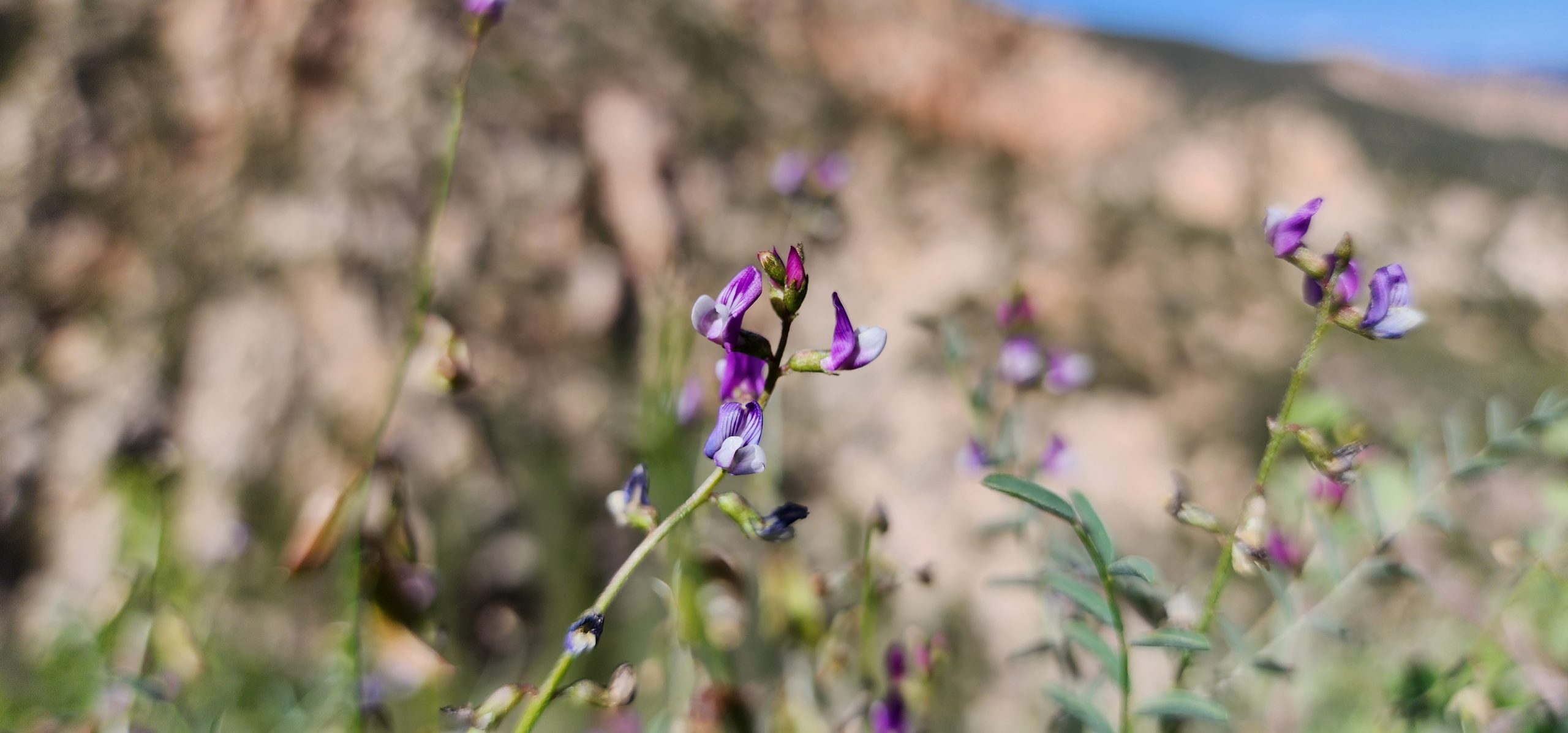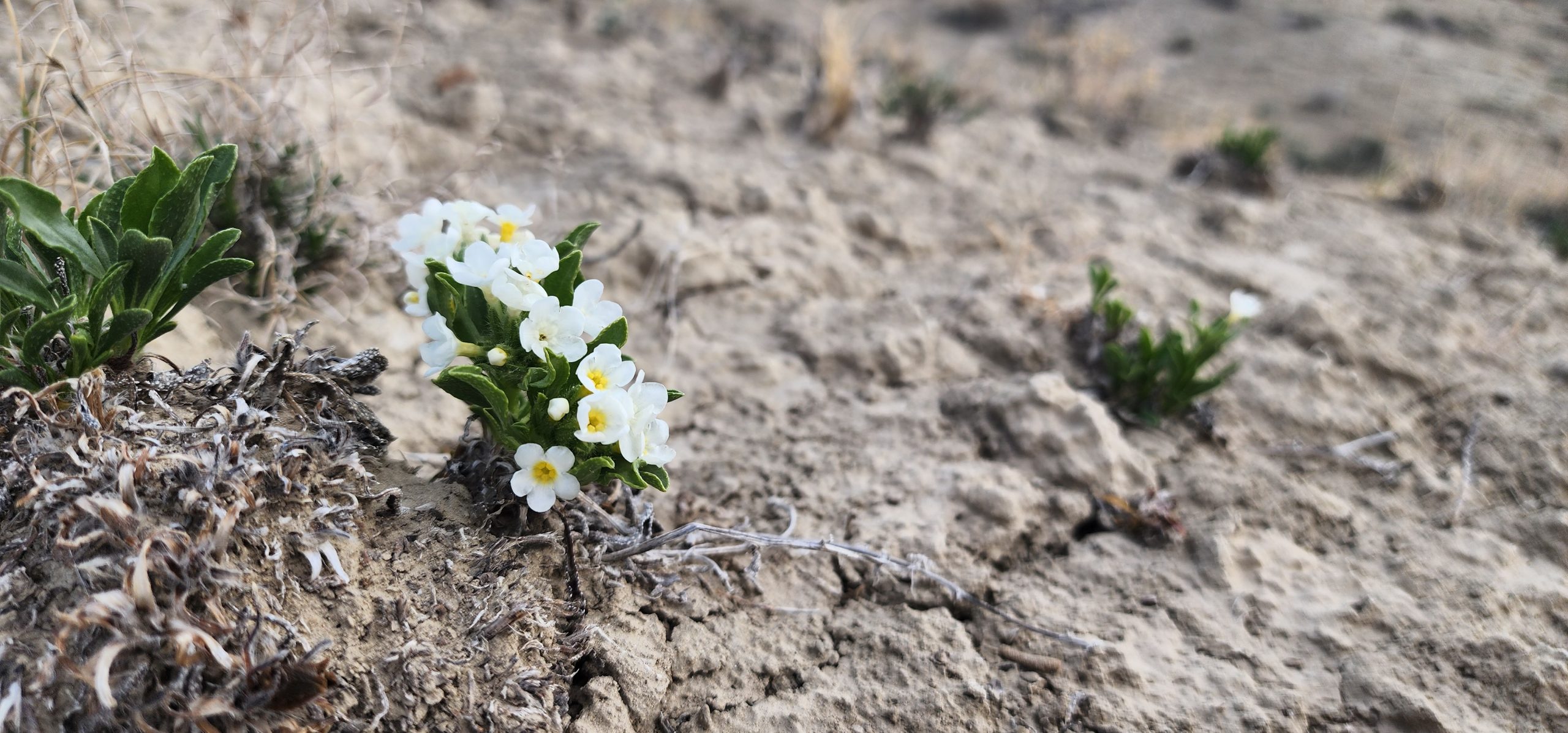Save Plants
Center for Plant Conservation
When you look closely at the relationships between plants and insects, you find examples of codependencies and mutualisms, coevolution and deception, chemical warfare and chemical beauty, and much more. Most flowering plants produce pollen and nectar, surround themselves with exquisite color patterns and scents that attract insects, and entice them to play—and reward them for—the role of pollinators. But there can also be a lot of drama in these interactions, including role reversals (plants eating insects), opportunistic predators (camouflaged spiders that catch visiting pollinators), and plant defense mechanisms that become defense weapons for the insects that can accumulate and use them.
The relationships between plants and insects go back to the very evolutionary origins of both groups. The fossil record contains multiple examples of insect damage (herbivory) on early plants. Terrestrial plants became an early source of food, shelter, and places to lay eggs for evolving insects and other arthropods (like mites). These relationships date back to the Devonian Period, some 420 million years ago, when some of the first plants established themselves on land. Since then, plants and invertebrates have evolved many adaptations and unique interactions, some of which capture our attention and defy our imagination. In this issue of the CPC Newsletter, we explore some of these interactions.
Christa Horn of the San Diego Wildlife Alliance describes their team’s conservation work (supported by CPC) monitoring beetles (Ips paraconfusus) that, combined with periods of drought, have killed many of the California-endemic Torrey Pine (pinus torreyana ssp. torreyana) at the Torrey Pines State Natural Reserve. We showcase CPC’s Rare Plant Pollinator Database, an invaluable resource that compiles information about rare plants and their pollinator associates. We also celebrate the work of our Conservation Champion, Dr. Sean Griffin from Lady Bird Johnson Wildflower Center, and his extensive research on plant/insect interactions in restored habitats. Finally, I share some of my own research and photographic explorations of plant and insect interdependency, from the unique habitats known as “phytotelmata,” or plant-held waters, to the exquisite and convoluted relationship between tropical orchid bees and the orchids that depend on them for pollination.
To save our rare plants, we need to understand what they need to thrive, including their pollinators and other species that interact with them, positively or negatively. We hope that reading these stories piques your curiosity to learn more about the fascinating, endearing, and often bizarre world of plants and their insect associates.
Safeguarding California's Endangered Torrey Pines
Each year, millions of visitors walk the trails of Torrey Pines State Natural Reserve (TPSNR), enjoying the rare sight of trees dotting the sandstone bluffs of California’s coastal cliffs. Along one of the main trails, many first-time visitors are surprised to exit the canopy of Torrey pine trees (Pinus torreyana) only to discover a graveyard of trunks and stems carpeting the slope below. Long-time visitors, no longer surprised, still lament the loss of a favorite grove of trees. The California five-spined engraver beetle gets the blame—but the story is more complicated than simply an insect wreaking havoc. The Plant Conservation team at San Diego Zoo Wildlife Alliance (SDZWA) and their partners are trying to learn more in order to help conserve the critically endangered (IUCN Red-List) Torrey pine.
The California five-spined engraver beetle, native to California and the Torrey pine woodland ecosystem, is a regular force of change in many western forests. But the beetle-tree dynamics are shifting in our changing world. Climate change, fire suppression, dense tree planting, and ornamental use of Torrey pines and other trees in surrounding neighborhoods all affect the Torrey pine woodlands at TPSNR. Triggered by a windstorm in 1988 and compounded by drought, the early 1990s saw a loss of over 12% of the main TPSNR stand. A prolonged drought in the 2010s sustained a beetle outbreak leading to similar losses. Stressed trees and a triggering event seem to be the elements needed for beetles to cause such large Torrey pine losses. Although controlling beetles at a landscape scale would be incredibly difficult, management of the ecosystem going forward will hopefully help to prevent losses and focus restoration efforts.
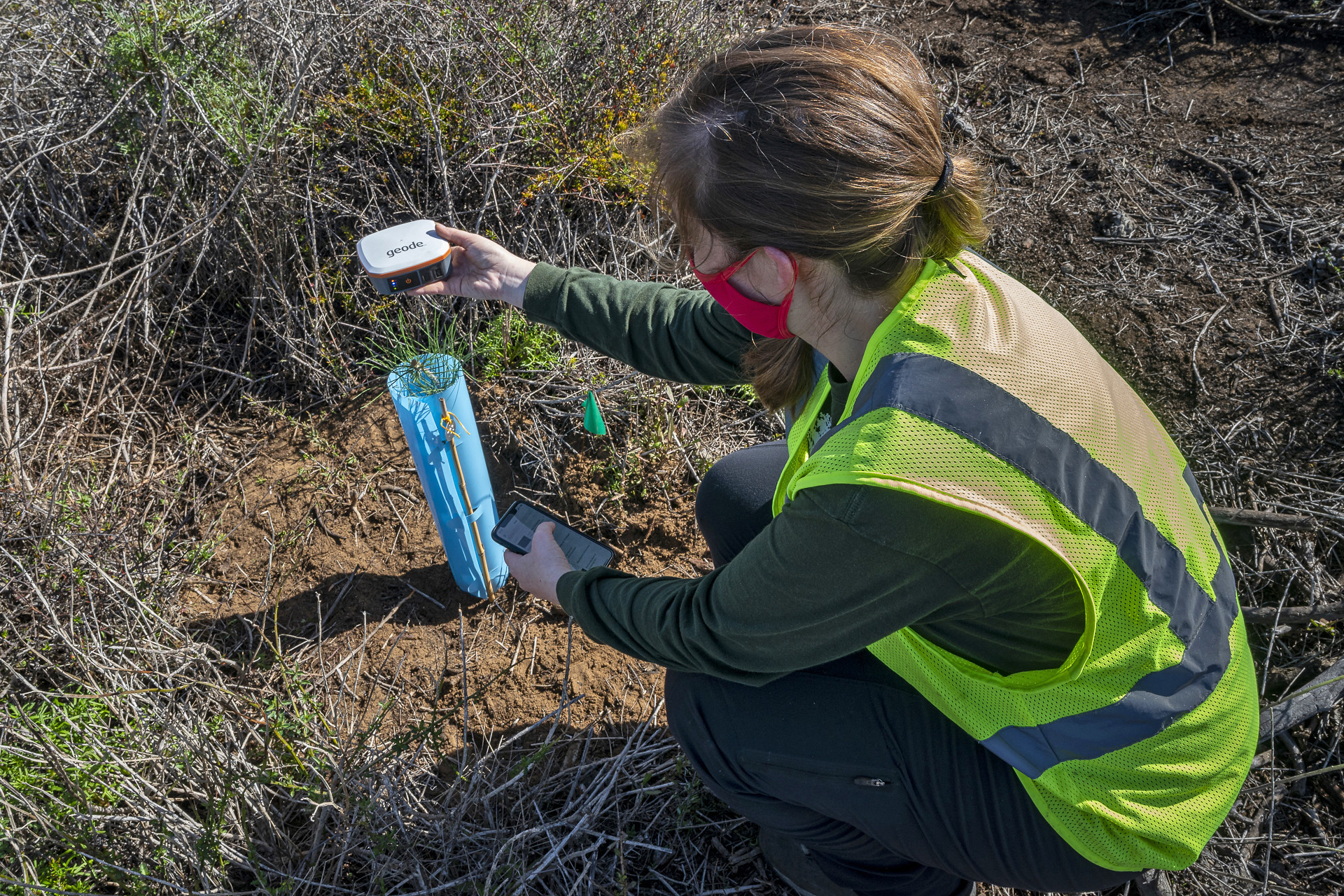
To this end, SDZWA is working with the California State Parks staff and the Center for Plant Conservation to learn more about the Torrey pines, their stresses, and the beetles in order to develop an effective management plan. Work initially began with niche modelling to better understand where the trees still thrive after the losses from beetles and drought. The resulting data helped guide enhancement plantings, conducted within an experimental framework to understand factors influencing recruitment and the potential to establish trees in more drought-friendly (and thus climate change-friendly) locations. Future plantings, informed by these results, will focus efforts in areas where recruitment is likely to be successful and trees are less likely to be stressed by drought.
With support from a U.S. Forest Service grant, the team has expanded the project to take a closer look at stresses in the adult population of Torrey pines. This includes evaluating past patterns of tree die-off and identifying current signs of stress. The team has established 12 monitoring plots where adult trees are assessed along various health variables and their growth is measured. Health variables include examinations of the crown for browning needles and branch loss, categorizing the amount of sap coming from the tree, looking for cankers, and more.
Growth is measured through the use of dendrometer bands, which are belts attached around a tree with a spring that expands as the tree grows. We will compare current growth to historical patterns gleaned through cores to see if there are any environmental (such as direction trees face on a slope) or biological variables (such as tree density) which correlate to low growth or stress. The idea is to identify areas more likely to have stressed trees, to help prioritize management efforts.
And we can’t forget the beetles. While the partners within the U.S. Forest Service are looking for an entomologist to tackle 20 years of historical beetle trap data, the SDZWA team is setting up tests for potential beetle deterrents. A future management plan would consider both trapping and deterrence to help address the beetle threat in different locations across the landscape.
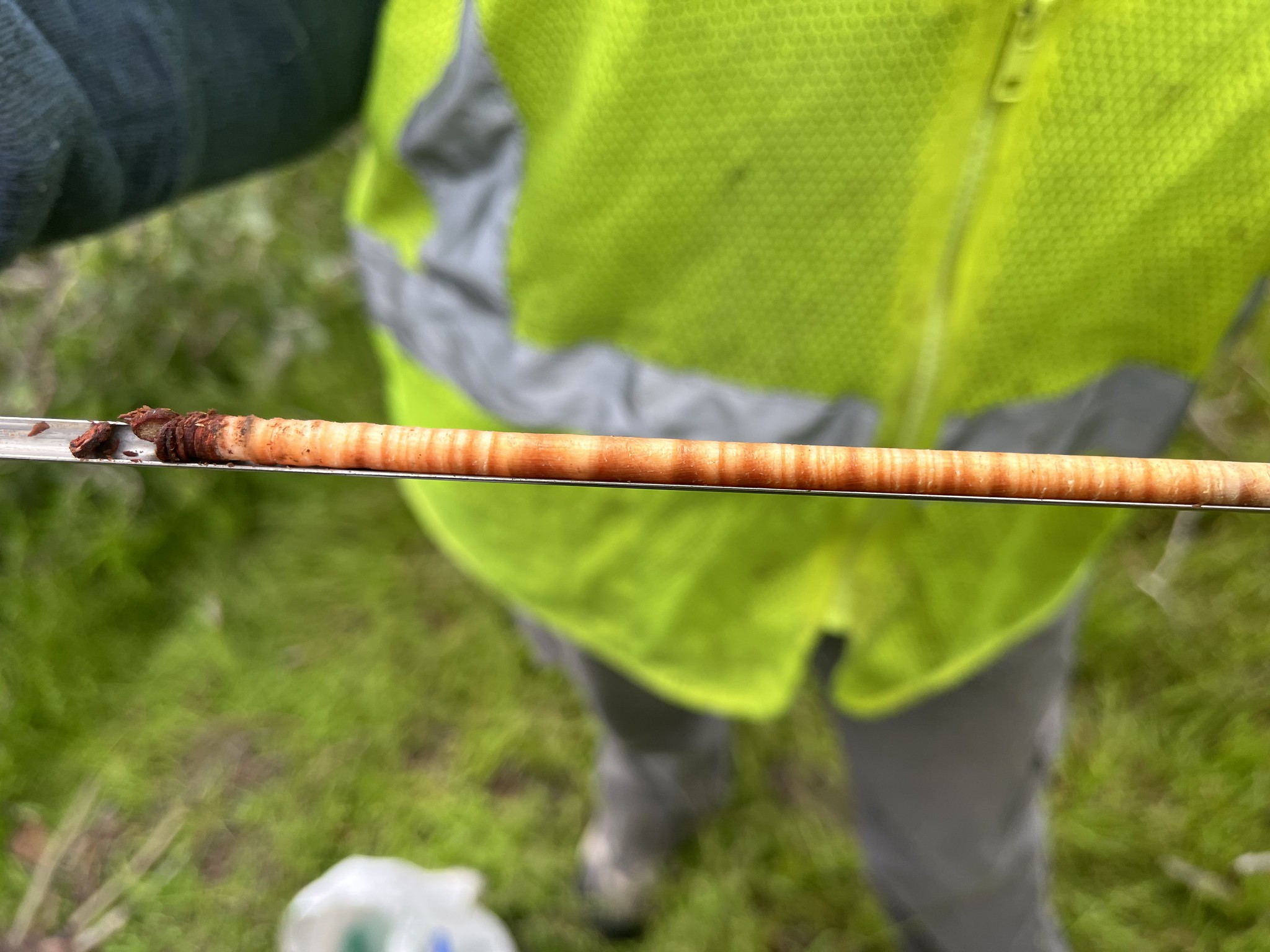
The SDZWA program has a few more years of data collection and analysis ahead before we are ready to help piece together a management plan. Thus far in the project, beetle numbers have been low, and it is unknown what might cause them to spike again. Climate change is increasing the likelihood of prolonged drought and extreme weather events – like tropical storm Hilary that recently hit Southern California. Our goal is to have some management tools in place to help keep any future beetle population spikes from killing trees for years after a triggering event, as has occurred in the past. The beetles aren’t going anywhere—but hopefully neither are the Torrey pines.
-
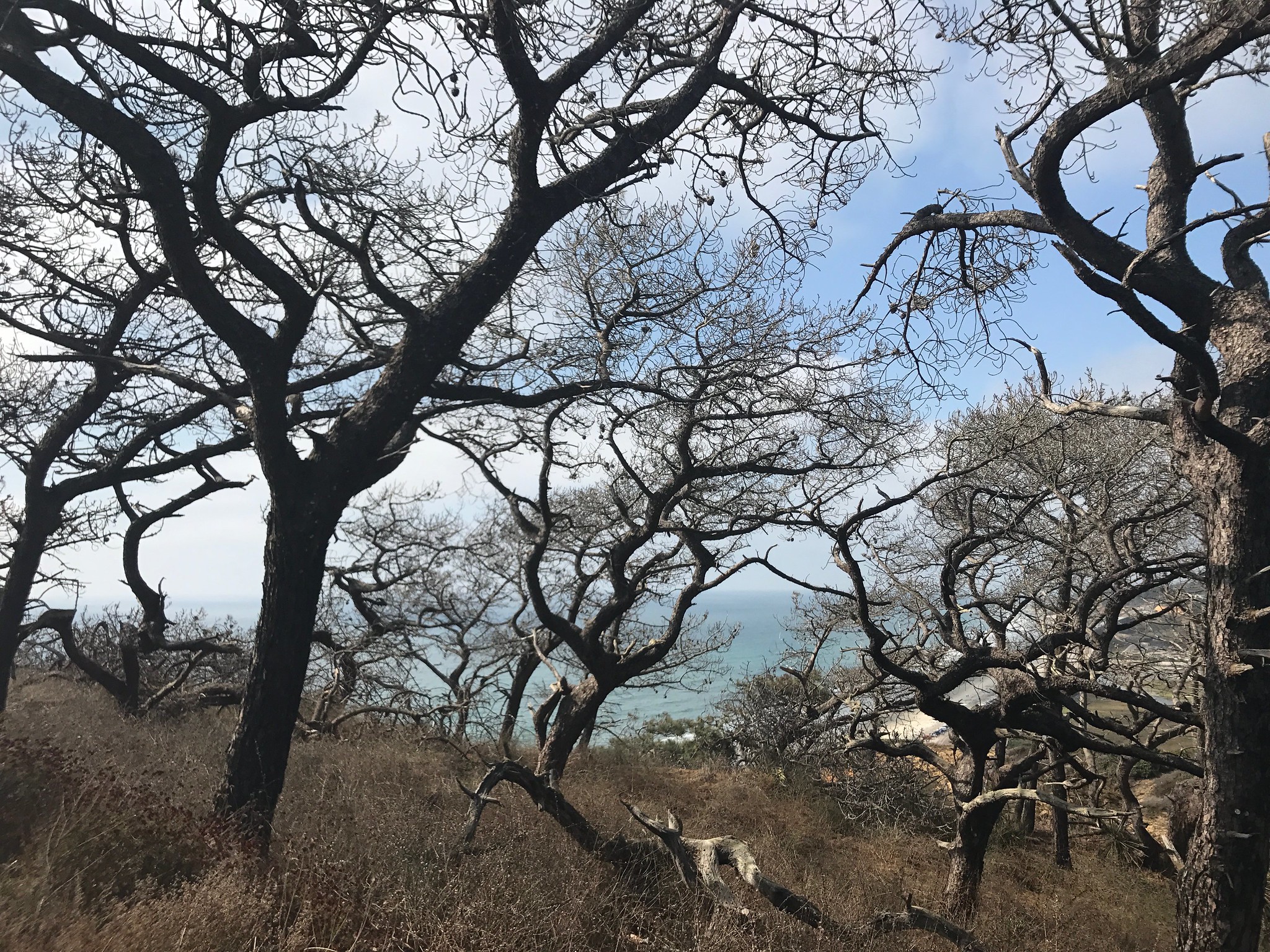
Torrey Pines State Natural Reserve lost over 16% of their Torrey pine canopy from bark beetles proliferating in a time of extended drought. Photo courtesy of SDZWA. -

CPC has been collaborating with San Diego Zoo Wildlife Alliance and the staff of Torrey Pines State Natural Reserve to Conduct a Reintroduction of Torrey Pine trees in an experimental context. This seedling was planted in 2021. -
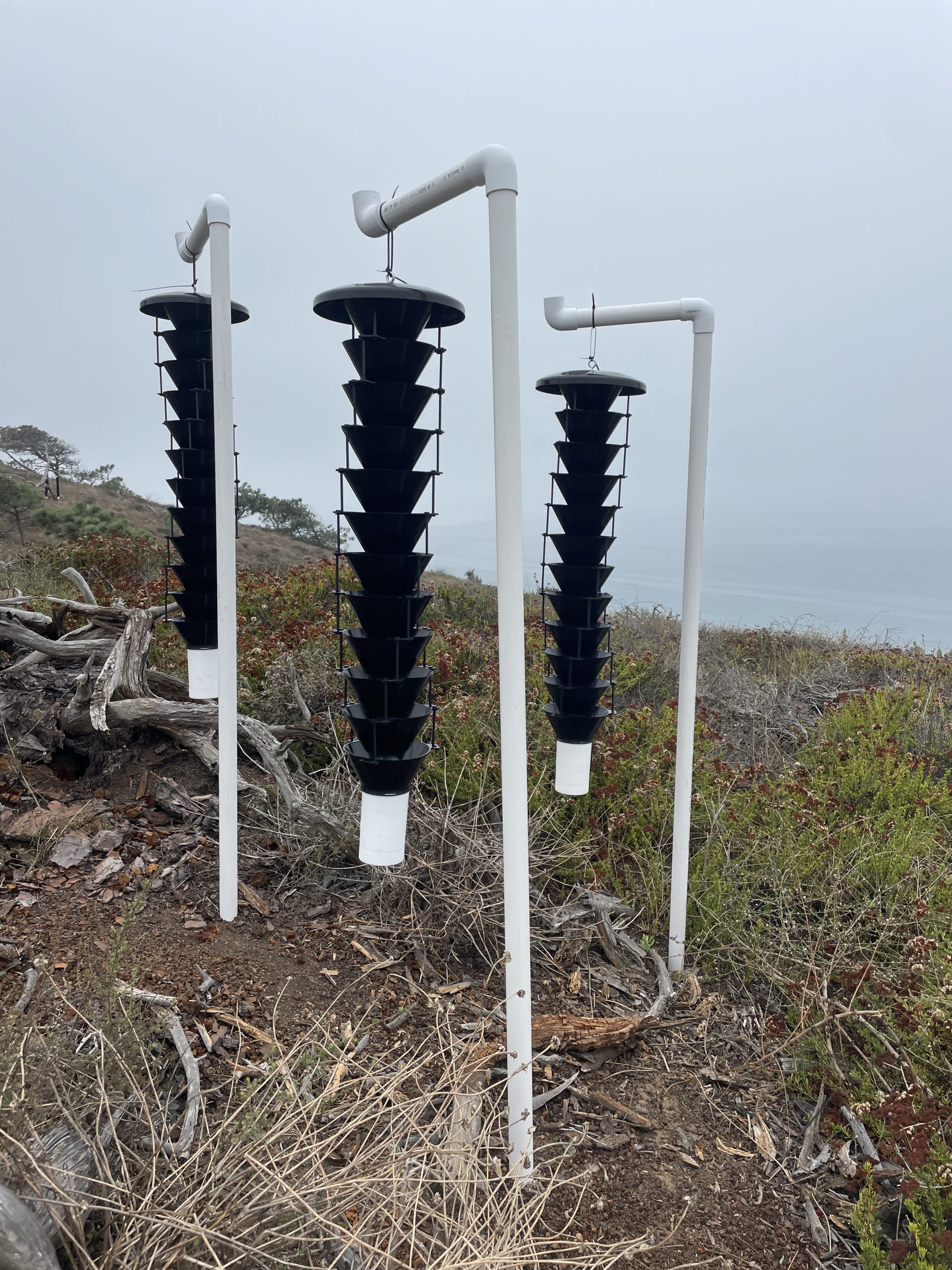
The State Park staff have a long-running trapping program to capture beetles. SDZWA is working with the Park and CPC to set up new trapping systems that will help test a chemical deterrence. Photo courtesy of SDZWA.
The Essential, Complex, and Often Bizarre Relationships Between Plants and Insects
The purple pitcher plant, Sarracenia purpurea, is one of those species that are rare in nature but common in the gardens and collections of carnivorous plant enthusiasts. Found in sphagnum bogs from Pennsylvania, Ohio, and New York all the way south to Georgia and the Carolinas, the purple pitcher plant has been studied in detail due to one particularly uncommon trait: it captures and “feeds” on insects. The Center for Plant Conservation’s National Collection lists one subspecies (Sarracenia purpurea ssp. heterophylla) and two endangered or threatened varieties (Sarracenia purpurea var. montana and Sarracenia purpurea var. venosa), all unique versions of this extraordinary species.
Carnivorous plants (from the Latin meaning “meat eater”) constitute a diverse—but uncommon in nature—group of terrestrial and aquatic plants that possess adaptations to entrap animals, primarily insects, but also other invertebrates and even small vertebrates. Some of them are truly spectacular, such as the giant modified leaves of the Bornean genus Nepenthes that can entrap lizards and even rodents. Our North American pitcher plants may not be as gigantic in volume, but they are stunning in size and adaptations to attract, entrap, and slowly consume insects.
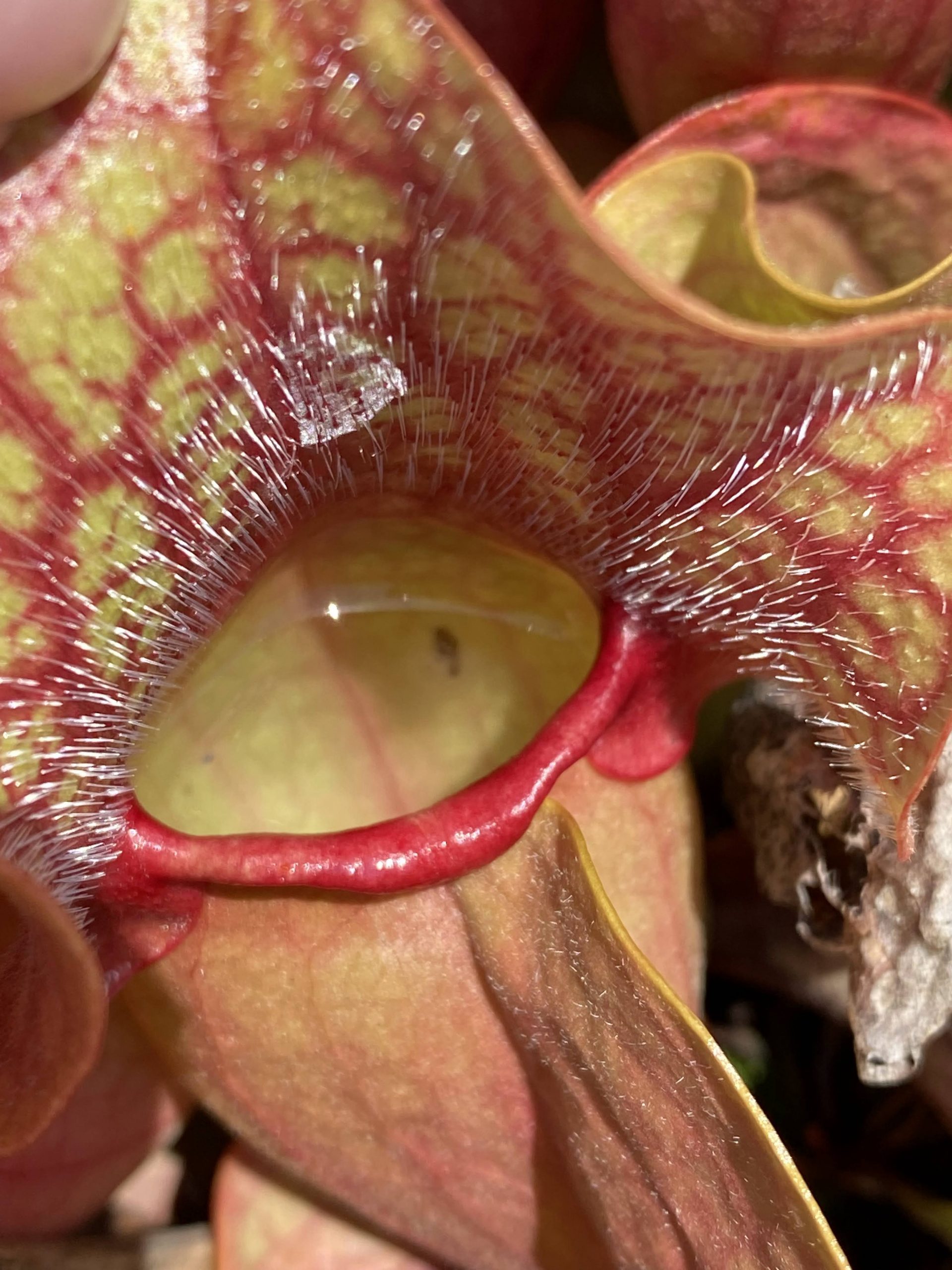
Early in my career as an aquatic ecologist, I became interested in the purple pitcher plant, Sarracenia purpurea, because of yet another unique characteristic: the liquid (mostly water) that its modified leaves contain is not only a way to drown the insects that it attracts, but it is also home or habitat to at least three species of flies (Diptera) and a fair number of microscopic invertebrates. At that time, I was studying the fly family Chironomidae, or non-biting midges, and had learned about one species, Metriocnemus knabi, that lives exclusively in purple pitcher plants. Together with a flesh fly and a mosquito, these three insects not only manage to avoid the set of “traps” that the pitcher plant has to catch insects, but they feed on the insects the plant catches or the microorganisms that take advantage of the nutrients that the dead insects provide.
Essentially, the purple pitcher plant is an example of what is known as “Phytotelmata”—from the Greek words for plant and pool, meaning “plant-held waters.” Other examples of phytotelmata are tree holes, bromeliads, and the tropical bird of paradise plants, some of which collect water in their flower bracts. While sampling the insects that live in the leaves, I noticed almost fully-grown midge larvae in pitchers that had opened recently, even the night before. The larvae of the midge undergo four growing spurts, called “instars,” which in this species may take several weeks or more to complete. Late-season larvae can overwinter in the pitchers and continue their life cycle in the spring. My question was, how can a recently opened pitcher have 3rd and 4th instar midge larvae if it has just opened? I hypothesized that the larvae must have left their old, original pitchers and colonized the fresh, new pitchers just as they opened.
As the pitchers age, they become crowded and stuffed with dead insects and potential competitors, low in oxygen, and perhaps dryer—in other words, less than ideal conditions to complete the larval development. I worked a whole summer trying to support my hypothesis, but to no avail. I could not document what was potentially a unique larval behavior, leaving the water of its original pitcher to find another younger pitcher with better conditions to complete development. The question remained a mystery to me and my research associates until now. A recent paper published this year documented the migration from old to fresh pitchers by the larvae of Metriocnemus.
Phytotelmata also led me to discover a new chironomid species in ground bromeliads in Florida. I spent several weeks collecting larvae from the water inside the bromeliads and rearing them to the adult stage, looking for males and females but finding only females. I realized that these midges are unusual in that the species has no males, only females, and they reproduce by parthenogenesis (essentially, cloning). I sent specimens of larvae, pupae, and adults to a taxonomist colleague for confirmation, and he described the species and named it Phytotelmatocladius delarosai—which was very cool.
Years later, I worked for six and a half years as Director of the famous La Selva Research Station in Costa Rica, part of the Organization for Tropical Studies. The trees in this spectacular rainforest are often covered with bromeliads, some of which have rosettes of leaves as big as a four-place round table. Bromeliads don’t need soil to survive. The axils of their leaves collect rainwater that often carries minerals, organic matter such as dead leaves, fruits, small branches, and insect and bird feces, picked up as the rain runs through the forest canopy. These aerial pools of water make an ideal aquatic habitat for insects, frogs (such as the famous tiny poison frogs of the genus Oophaga, which use these pools to raise their tadpoles), and other small animals.
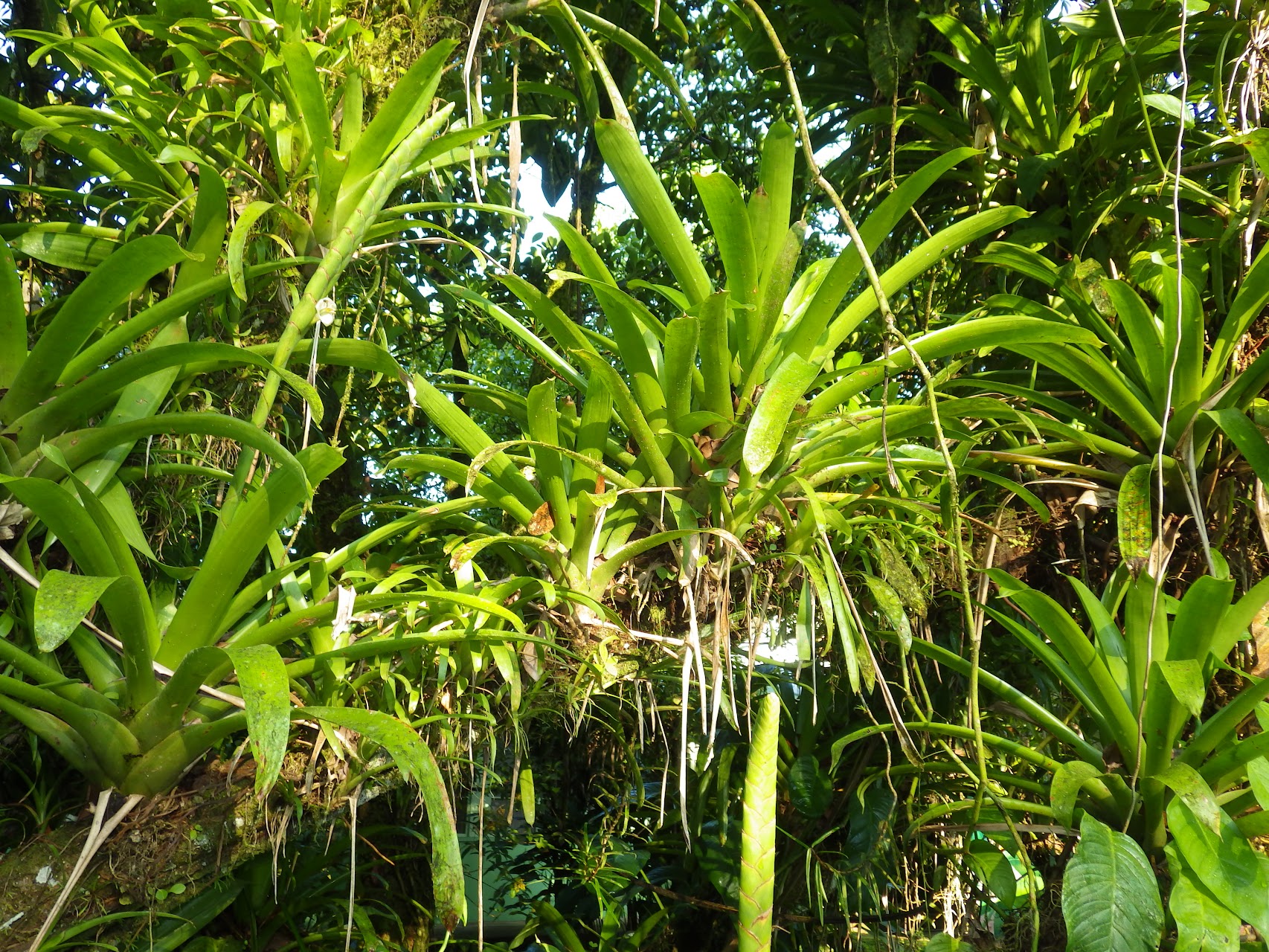

One day, while strolling through the walkways within the station, I noticed a small brown thing stuck under the leaf of a bromeliad. It looked familiar, so I got a ladder, climbed to reach it, and inspected it. It was the exuvia or cast skin of a dragonfly! I knew that some damselflies use tree holes filled with water to lay their eggs, providing a secluded and safe environment for the developing larvae. But dragonflies? I had never heard of them using bromeliads. So, I paid more attention. From that day on, I regularly looked under bromeliads, sometimes using binoculars, to see if I could find a larva ready to emerge as an adult.
It took several weeks, but early one morning, I saw a still-wet larva outside the bromeliad pool, hanging upside-down from the back of a leaf. My vigil started. It took about two hours to observe and photographically document the emergence of a beautiful dragonfly from its larval skin. Over the next few weeks, I looked for more specimens and sent them to a friend specializing in Odonata, the order of dragonflies and damselflies. It ended up being a new species for science. We called it Erythrodiplax laselva, in honor of its place of discovery.
I want to share one more story of plants and insects, also observed at the La Selva Research Station. The relationship between orchids and bees is an incredible story of coevolution. The brilliantly colored, metallic-looking orchid bees of the rainforest are spectacular in their own right. Some species are the pollinators of relatively rare orchids of the genus Gongora. Two species grow wild on the campus of the research station: Gongora leucochila (flowers of mottled white with pinkish-red stripes) and Gongora unicolor (uniformly red flowers). A species of Euglossa metallic green orchid bee visits both species of orchids, together with other insects. But the bee is the actual pollinator and star of this story.
Only the male bees visit the impressive sprig of flowers when they open. The males collect volatile compounds (perfumes) from the petals and other areas of the flowers, using specialized brushes on their front legs. They store the flower’s perfume in special pouches on their rear legs, where it combines with the scents of similar flowers to create a unique fragrance used to woo females in an elaborate and energetic courtship flight. The orchid’s investment in producing these chemicals is substantial and has one important purpose: to draw the bees to the place where the orchid stores its pollen. The storage structures (“pollinia”) consist of two tiny sacks filled with pollen that are attached to the flower by a sticky tip (see photo below) and covered with a detachable cap. The idea is that a male bee, competing with other males in a frenzy to collect the perfumes of the flower, will come in contact with the pollinia, which stick to the bee’s back. As the bee flies to other orchids, the pollen sacks will start to dry and eventually release the pollen close enough to a receptive flower of the same species to successfully carry out pollination.
I observed, photographed, and filmed hundreds of male bees visiting Gongora flowers over two years. Only twice was I able to watch a male collect pollinia and carry them off on his back (see photo at right). It is a rare set of circumstances, perfect timing—and even a bit of luck—for the male to encounter the pollinia in the right way. However, it happens often enough to maintain a sparse but healthy population of these beautiful, rare orchids in the immense hustle and bustle of the tropical rainforest.
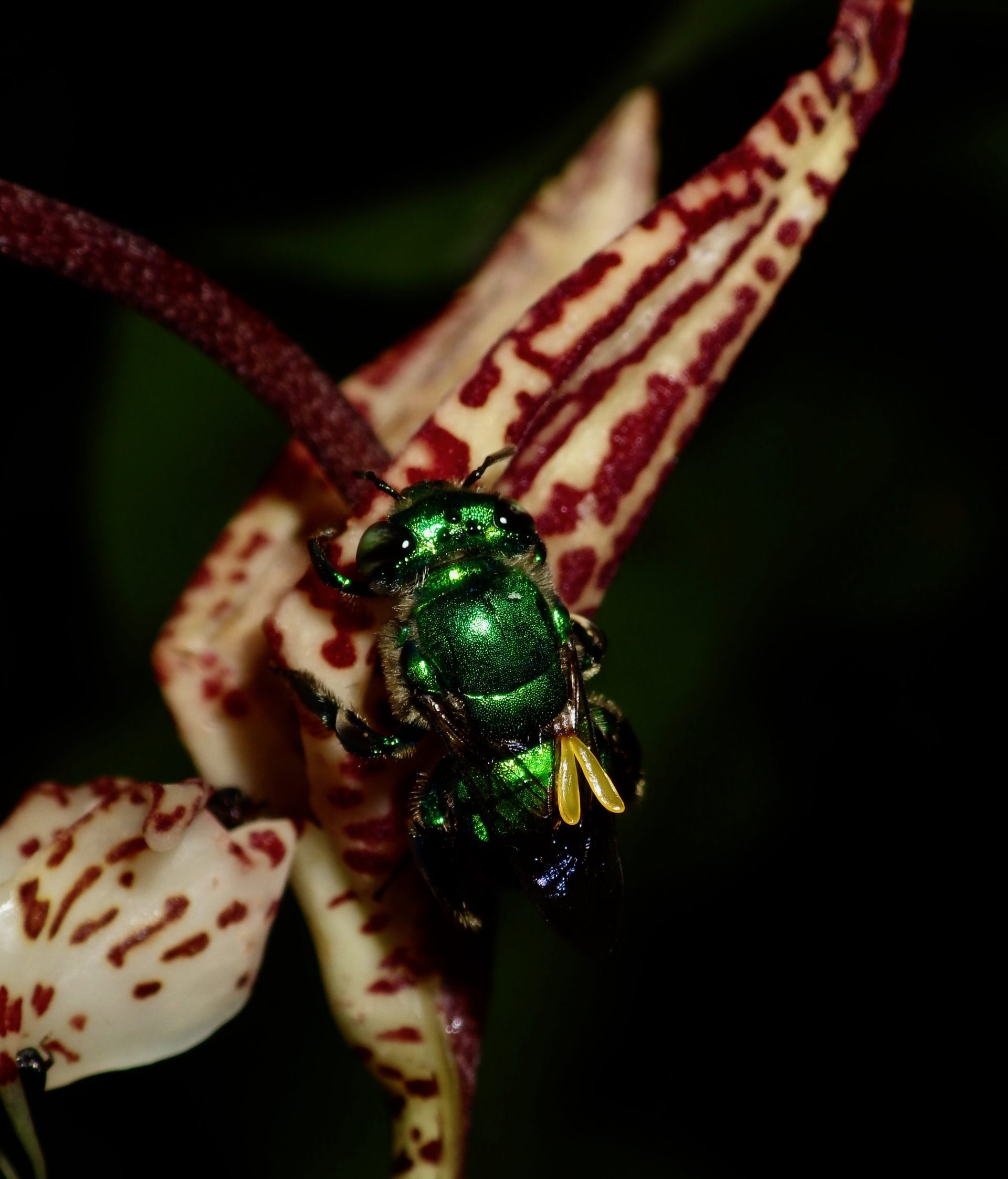
There are innumerable examples of rare plant/insect interactions, all deep in complexity, shaped and honed by hundreds of thousands of years of evolution. Rare plants cannot survive without their insect associates. Studying and understanding these relationships is crucial to conserving plants and their pollinators.
-
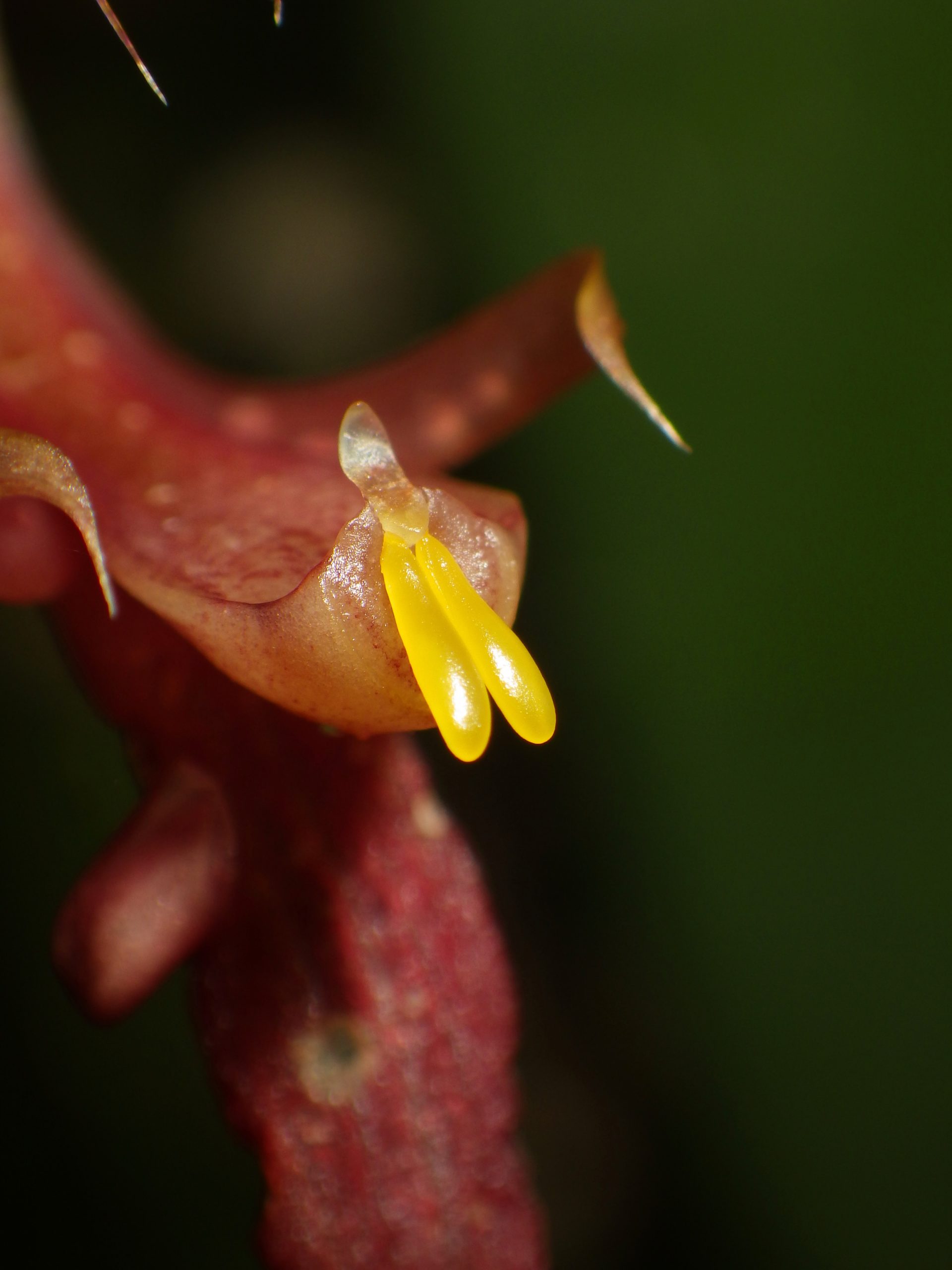
An exposed pollinium (minus the cap that protects it from dehydration) shows the two little sacs that contain the flower’s pollen and the sticky tip. Photo credit: Carlos L. de la Rosa. -
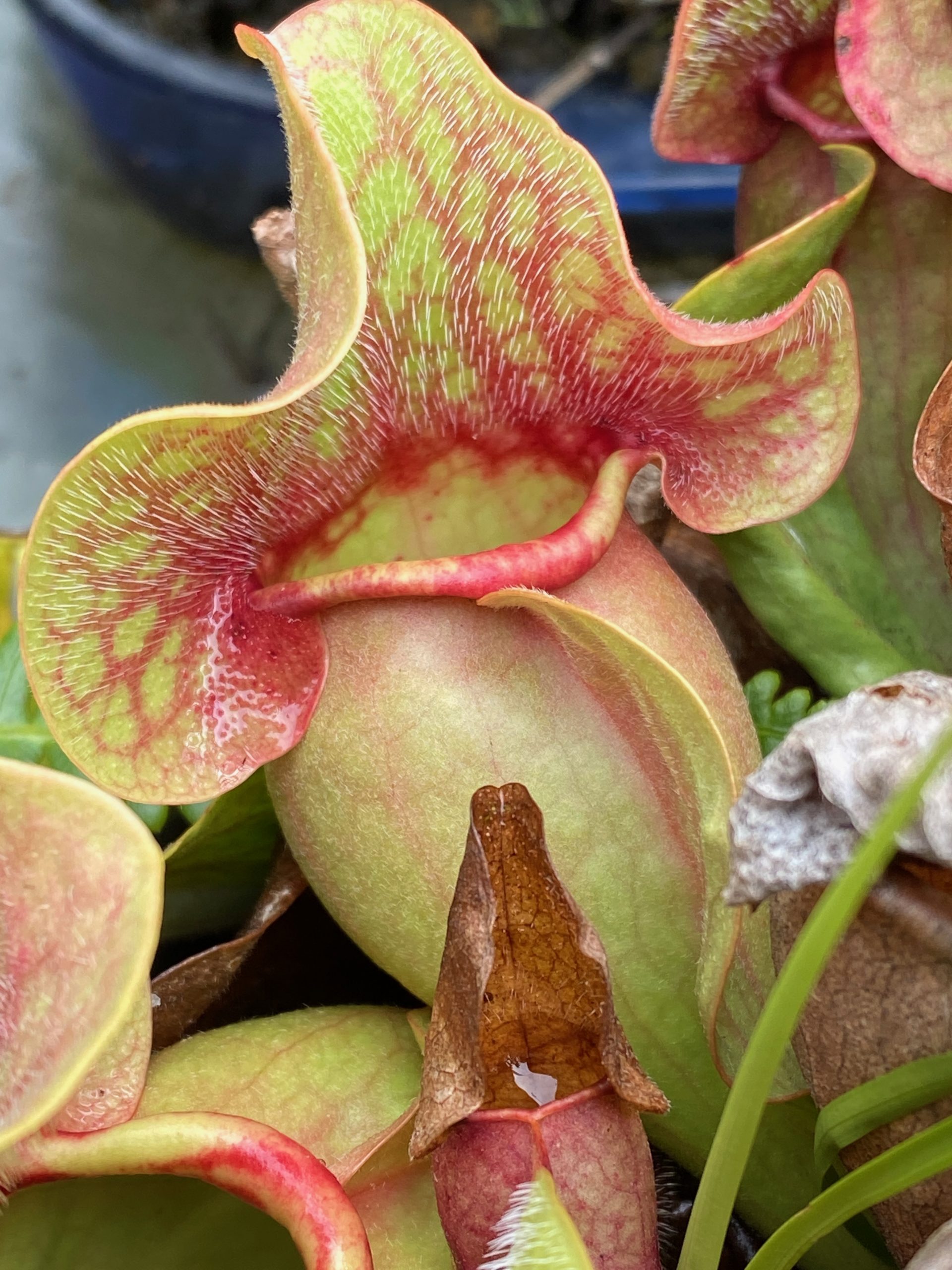
Sarracenia purpurea. Photo credit: Carlos L. de La Rosa. -
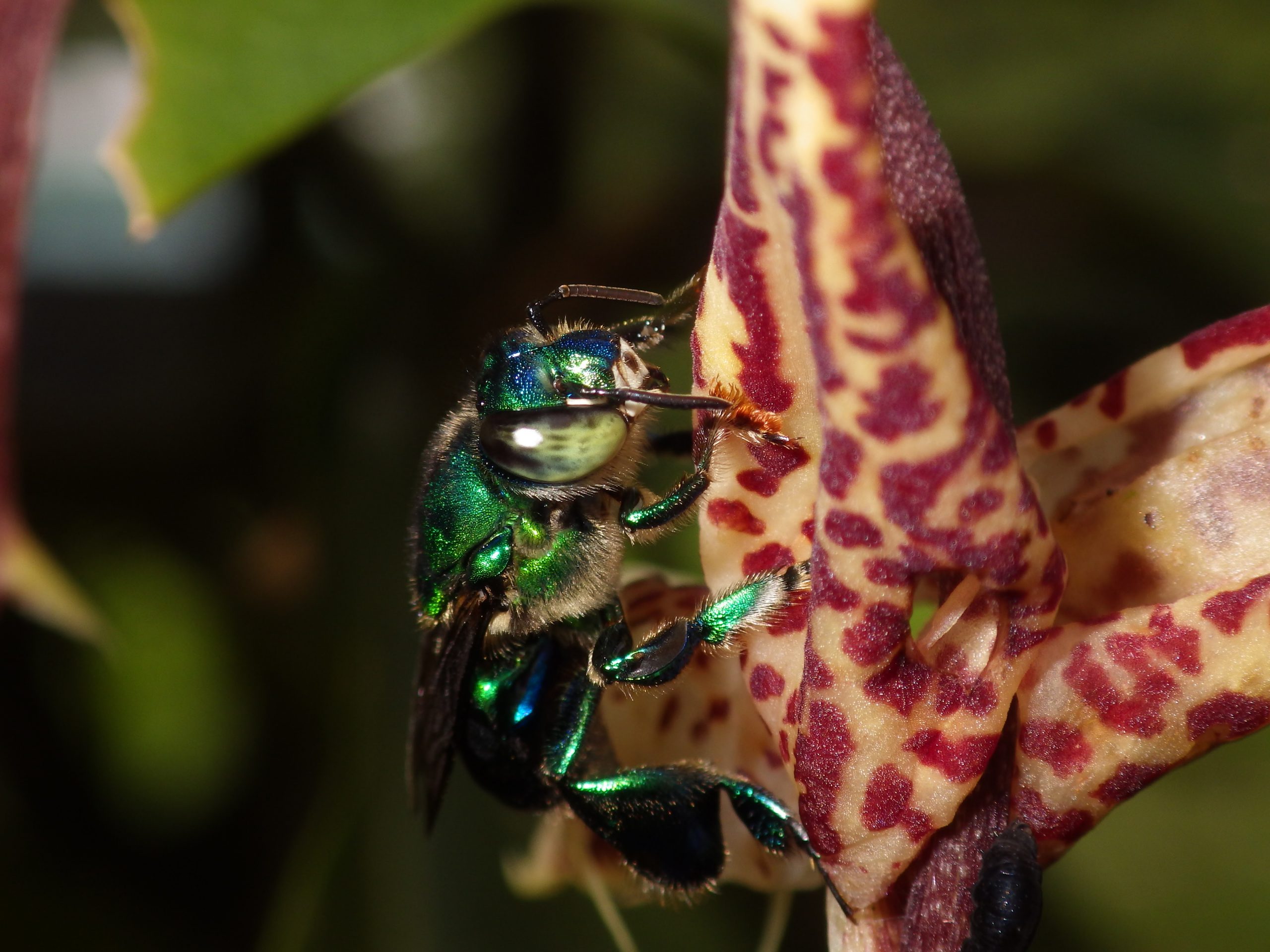
Male Euglossa sp. scraping the volatile compounds (perfumes) from a Gongora leucochila flower, using little brushes on his front legs. He will store these perfumes in special receptacles on his hind legs. Photo credit: Carlos L. de la Rosa.
Sean Griffin
Our September Conservation Champion, Dr. Sean Griffin of the Lady Bird Johnson Wildflower Center, is no stranger to plant-insect interactions, having a life-long interest in bees and other pollinators and even focusing his graduate work on pollinator ecology. However, it was studying bee communities in the Nachusa Grasslands, a tallgrass prairie restoration in Illinois, that led to Sean’s love of the prairie landscape and dedication to restoring the incredible plant diversity of native grasslands. At the Wildflower Center, Sean utilizes his expertise to lead restoration-focused research and rare plant conservation projects. We thank Sean for his conservation work helping us better understand the interactions between plants and pollinators–a critical component in our shared mission to Save Plants from extinction!
When did you first fall in love with plants?
I haven’t always been interested in plants; as an entomologist, I spent most of my life only caring about flowers because that’s where I could find bees and other pollinators. That all changed during my graduate work, when—on a whim—I started a side project studying the bee communities of the Nachusa Grasslands, a high-quality tallgrass prairie restoration run by the Nature Conservancy in north-central Illinois. I had never before seen such brilliant, awe-inspiring plant diversity! Walking around these restorations and marveling at all of the beautiful, rare flowers hidden in the tall grasses or tucked into crevices on the bluffs, I fell in love with the prairie landscape. That’s when I decided to give up my agriculture-focused research and devote my career to studying the restoration of our native grasslands.
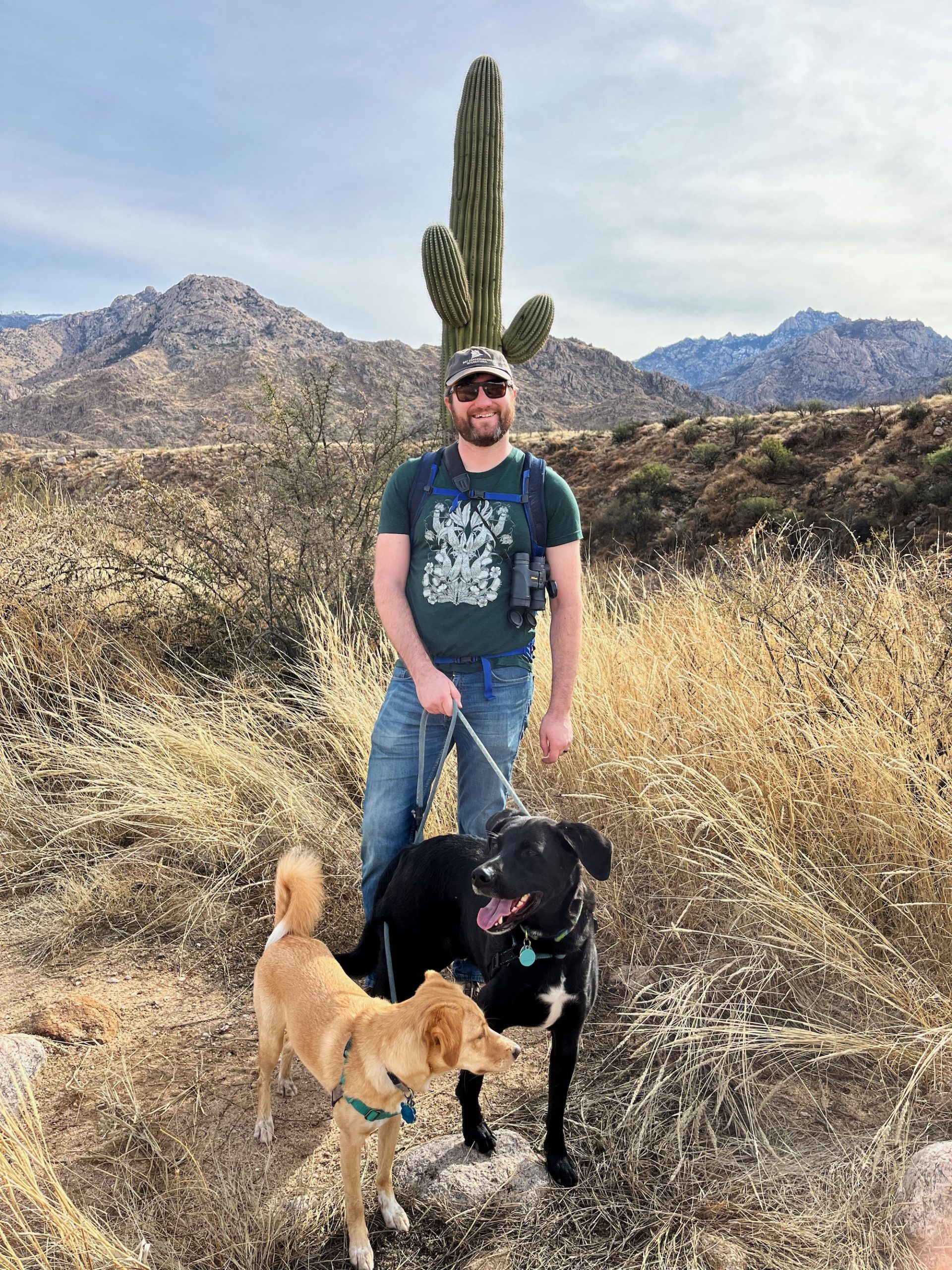
What was your career path to the Lady Bird Johnson Wildflower Center?
Halfway through my PhD studying pollinator ecology at Michigan State University, I had a second epiphany, realizing that the parts of my work I enjoyed most fell outside of the general academic track and instead focused on hands-on conservation and engaging with the public. With this in mind, I started leading tours and educational events at our local botanical garden and looking for opportunities to gain more experience with environmental education. In a stroke of luck, I was able to secure an Outreach Fellowship that allowed me to teach K-12 students and run public science events to fund my graduate work, which eventually led to a Certification in community engagement.
After graduating, I took a postdoc position studying grassland restoration in Texas and had the opportunity to collaborate with researchers at the Lady Bird Johnson Wildflower Center. Although I had never planned to stay in Texas, I became so enamored with the botanical garden that I ended up switching all of my postdoc research to the Center. Eventually, the Director of Science and Conservation position came up, and the rest is history! Working at the Wildflower Center has been a dream, allowing me to lead exciting restoration-focused research and rare plant conservation projects, while simultaneously pursuing my interests in K-12 education, science writing, and public engagement.
In your experience, what are some of the pressing conservation needs impacting Texas’s rare and native plants?
As a huge state with extremely high biodiversity, Texas is home to over 5,000 species of native plants, of which nearly 450 are considered rare or vulnerable. These species face ongoing threats from a mix of factors, including urban development, overgrazing, and fire suppression. However, private ownership of most of the land in Texas can make it extremely difficult to assess the status of at-risk plants. Conservation in Texas is dependent on close collaboration and open communication between landowners, land managers, and plant conservationists—which can create challenges, but also exciting opportunities to engage the public and enlist allies for our important work! With strong connections to their history and land, Texan landowners can be some of our best resources for understanding local ecology and changes in plant communities over time.
What conservation project(s) are you currently working on? What successes or challenges have you encountered in your work?
Our team at the LBJ Wildflower Center is currently working on two main conservation projects: building up our seed bank efforts and launching an all-new Texas Plant Conservation Alliance to increase communication and collaboration between plant conservation professionals across the state. Working with CPC, we have been inventorying our existing seed collections and building priority lists for future collections, starting with rare and threatened species across our local ecoregion, the Edwards Plateau. Building a new Plant Conservation Alliance in Texas will be key to these efforts, allowing increased sharing of knowledge, expertise, and seeds between our state’s many conservation organizations. We hope that this new Alliance will lead to more coordinated, collaborative efforts and help us towards our goal of collectively banking all of the at-risk plant species in Texas!
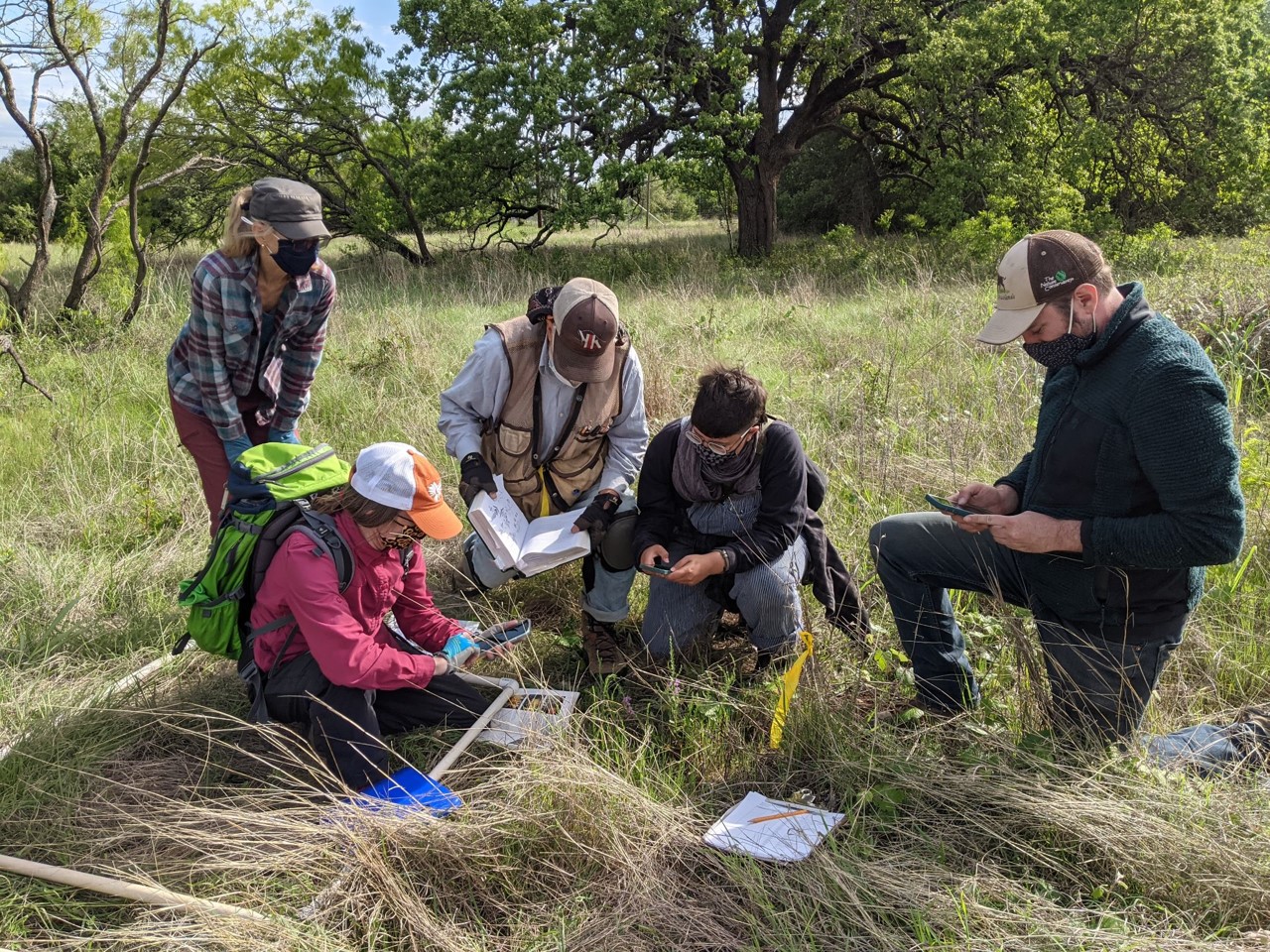
Can you share insights into your research on the interactions between plants and pollinators in restored habitats?
Communities of insect pollinators, such as bees, flies, and butterflies, closely follow the trajectory of their associated plants—meaning that the successful restoration of pollinators depends on the recovery of diverse, thriving communities of flowering plants. We find that pollinator communities in remnant habitats may remain distinct from those of restored habitats even years after establishment, likely due to the presence of rare, old-growth plant species. Similarly, restored habitats may continue to add new pollinator species for more than 20 years following initial restoration, likely due in part to the continued emergence of sensitive plants. Many species of pollinators also depend on natural disturbances, such as fire, which can open up habitat for plant biodiversity and increase flowering. These findings show that deliberate and active land management designed for plants can have enormous benefits for our insect pollinators.
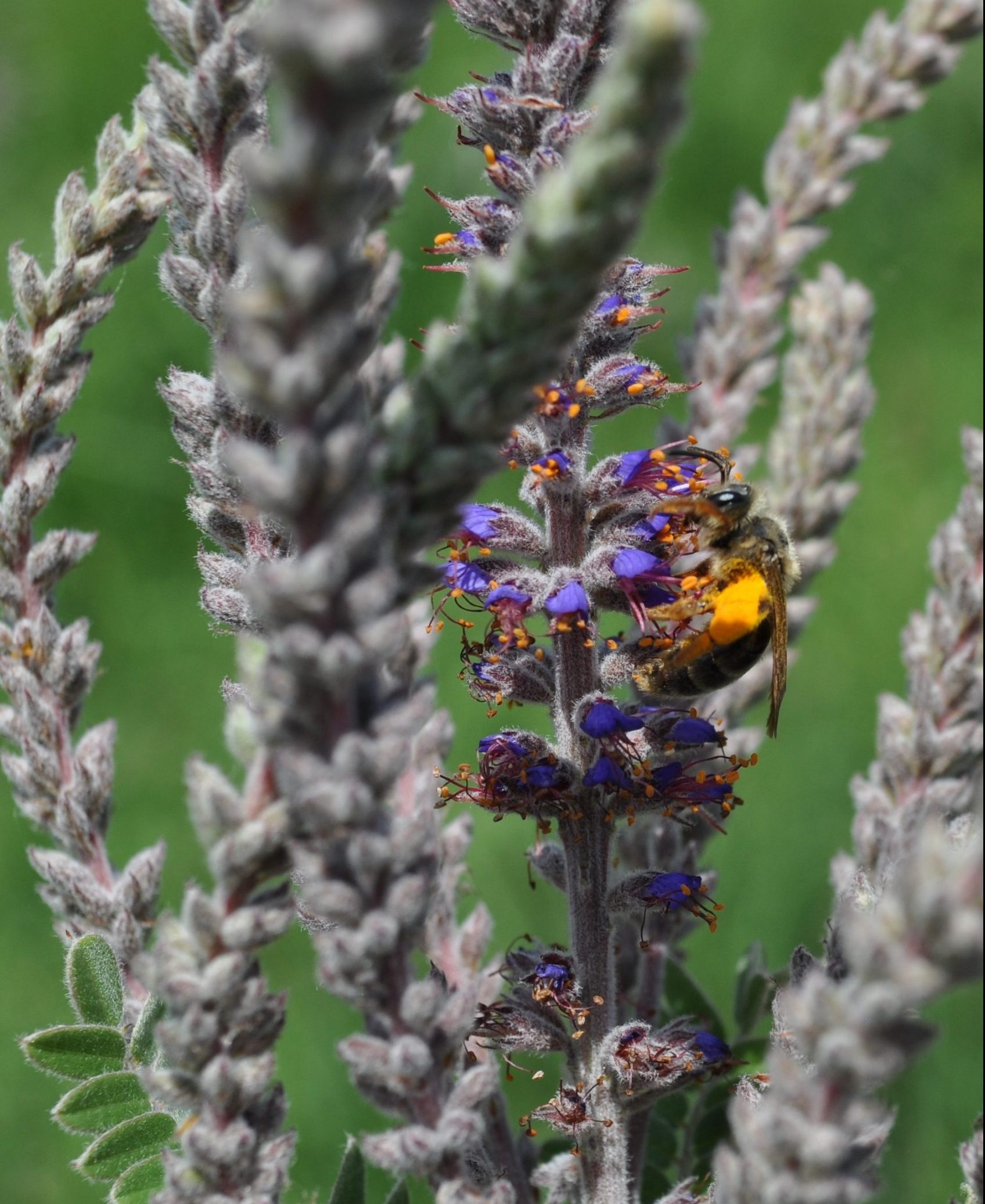
What has surprised you about working with and learning more about rare plants?
I am continually inspired by the dedicated botanists who have spent years working to protect pockets of key habitat and imperiled plant populations in their local areas. As a recent Texas transplant myself, I’ve loved getting to know our Native Plant Society members and the community of botanists in Central Texas, and I am amazed at their wealth of knowledge about certain rare plants. Some of these folks have followed a population—or even an individual plant—for a decade or more, and therefore can provide insights that are instrumental to our conservation efforts.
What advice would you give to those who wish to learn more about how they can help save imperiled plant species?
I’ll use this as an opportunity to plug the LBJ Wildflower Center’s Native Plants of North America database, an incredible online resource for understanding the natural histories of our native plants. For each species in North America, the searchable database has a wealth of pictures, plant descriptions, and even information about planting! We are in the process of overhauling the existing website to improve searchability and user experience, so check it out!
CPC Pollinator Database
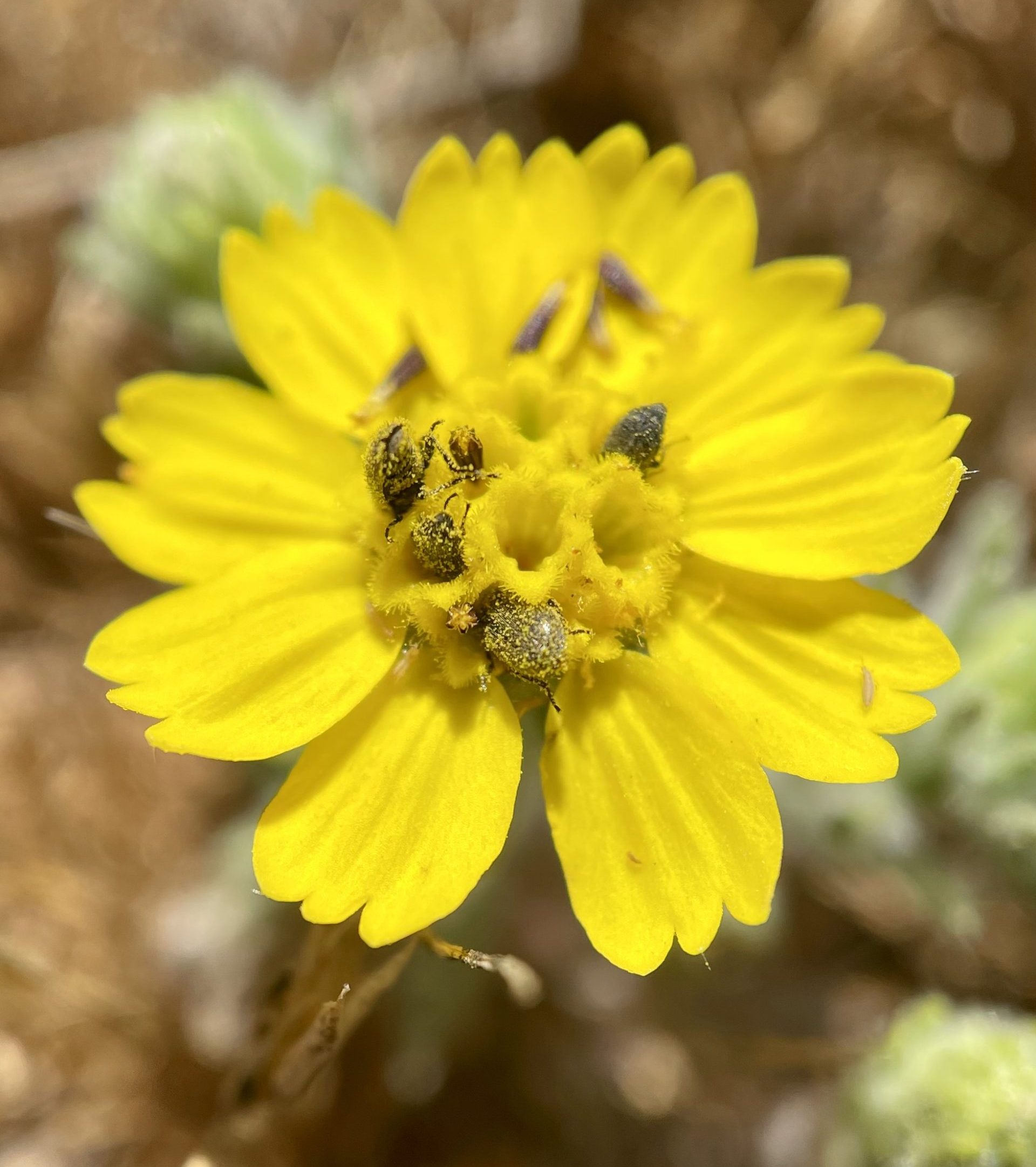
Pollinators play an essential role in plant reproduction. To best conserve and save rare plants from extinction, we must be able to identify their pollinators and understand the complex relationship they share.
Bees or butterflies are often the first to come to mind when we think of the word “pollinator,” but there are many different species and factors that support pollination. One of the most common pollinators is wind, moving pollen across an area and from plant to plant. Birds such as hummingbirds and finches, as well as other insects like ants, moths, and beetles, are also busy pollinators. Many pollinators evolve alongside plants to create complex ecological relationships, such as agave and certain species of cacti that rely on bats to pollinate flowers opening high above the desert floor at night.
To aid plant conservation practitioners in their work, the Center for Plant Conservation has developed the CPC Pollinators of Rare Plants Database. This useful tool contains information on plant-pollinator pairs and interactions. Users can search by plant name to discover data on potential and confirmed pollinators, or search by pollinator group to find rare plants they may visit and pollinate. This information can be practically applied to conservation actions, such as rare plant reintroductions into natural landscapes, in which understanding pollen vectors is critical to a project’s success.
National Collection Spotlight: Green Pitcherplant
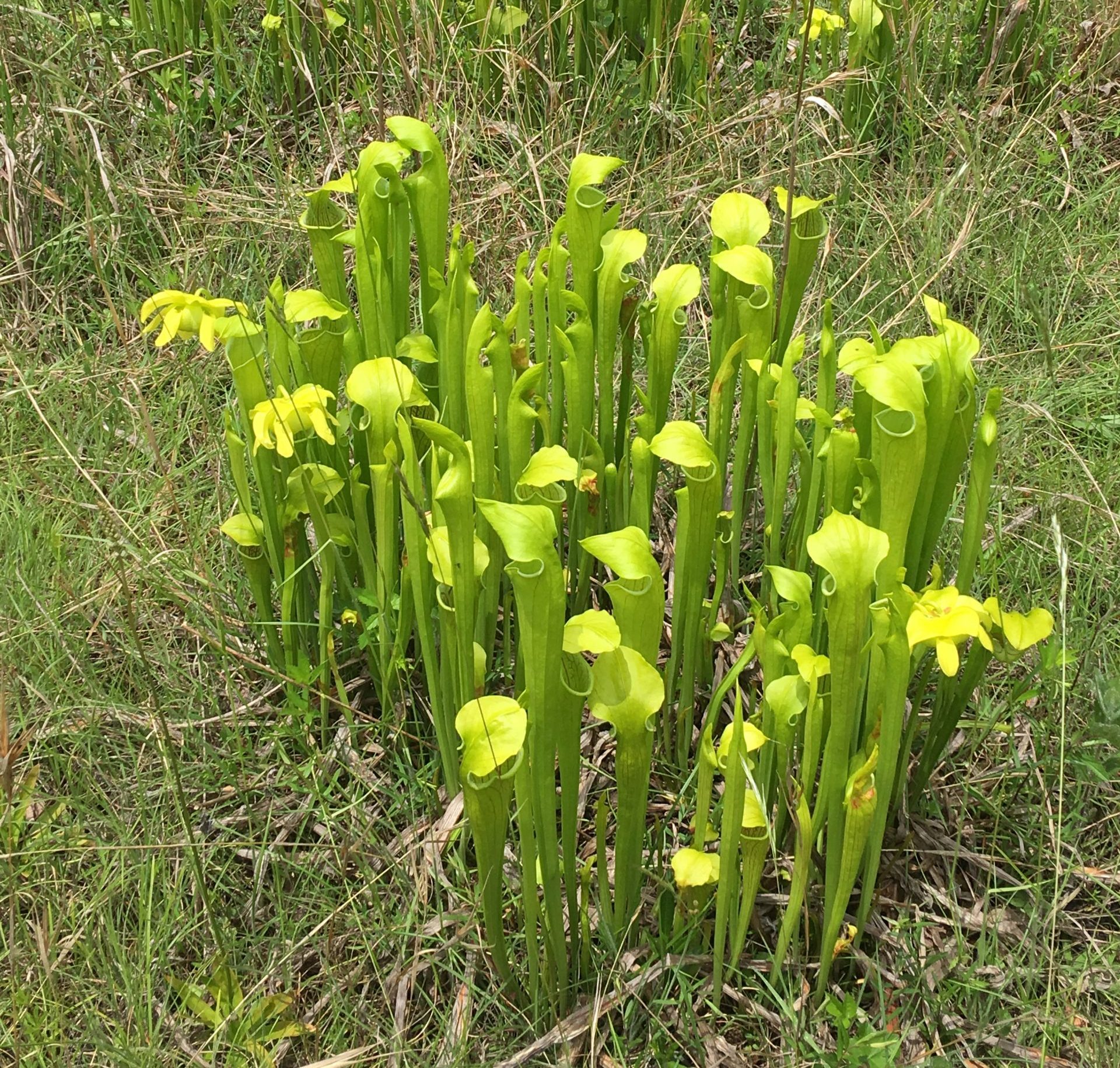
Green Pitcherplant (Sarracenia oreophila) is an imperiled species native to the southeastern US, with 36 known extant occurrences in North Carolina, Georgia, and Alabama. Listed as Endangered under the federal Endangered Species Act, Green Pitcherplant is one of many carnivorous plants threatened by poaching from wild populations for illegal horticultural collection. It is also one of the many rare plants being investigated in our collaborative IMLS-funded seed longevity study.
Sarracenia oreophila is secured in the CPC National Collection at North Carolina Botanical Garden and Atlanta Botanical Garden. The work of Atlanta Botanical Garden to steward this rare species is featured in a previous CPC newsletter article.
Learn more about conservation actions taken for Green Pitcherplant on its National Collection Plant Profile, and help support critical conservation work for this species with a Plant Sponsorship.
As Seen on CPC’s Rare Plant Academy: Using Ex Situ Collections to Test Mating Systems – Brighamia insignis
Many plant species have flowers that are adapted to perfectly suit a specific pollinator group or species. This is the case for the rare Hawai’i endemic, Brighamia insignis, or Alula, which is thought to have adapted to moth pollination. However, observations of Brighamia insignis in the wild showed no pollinators effectively pollinating this incredibly rare plant. It is hypothesized that the moths that once pollinated Alula may now be very rare themselves, or perhaps extinct. What can we do when a plant’s pollinator disappears? In this video created for the Rare Plant Academy with a storyboard by Seana Walsh of National Tropical Botanic Garden, we learn about what researchers can do to explore mating systems for plants ex situ. Researchers at National Tropical Botanical Garden conducted breeding system experiments to evaluate the self compatibility of this species in a greenhouse setting. This approach can be utilized by researchers at botanic gardens to uncover management strategies for rare species. Watch the video and check out the Rare Plant Academy Video Library to watch many more videos and presentations focused on rare plant conservation!
Get Updates
Get the latest news and conservation highlights from the CPC network by signing up for our newsletters.
Sign Up Today!Ways to Help CPC

Conservation Advocacy Initiatives
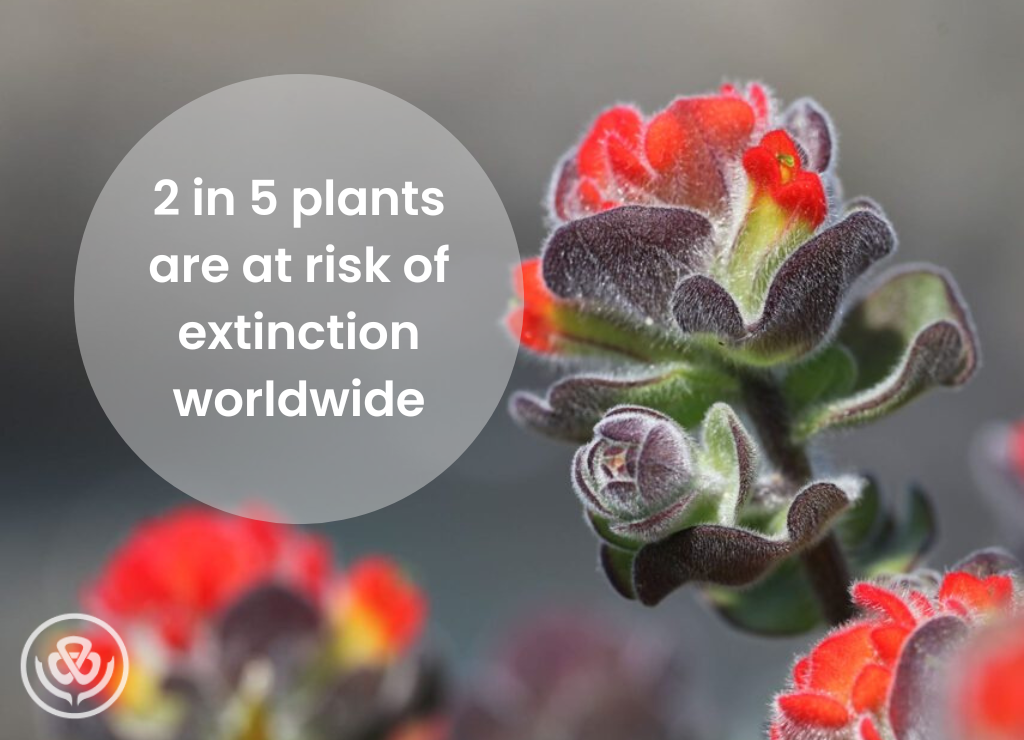
Be a rare & endangered plant advocate and tell your representatives Wildlife Can’t Wait!
The Recovering America’s Wildlife Act would be an unprecedented investment in conservation, providing more than $1 billion annually to states, tribes, and agencies. This includes the first consistent funding – $97.5 million annually – to conservation efforts led by Tribal Nations.
TAKE ACTION NOW: Contact your U.S. Representatives to urge them to co-sponsor the Recovering America’s Wildlife Act!
How to reach out:
- Call the Capitol Switchboard 202-224-3121 and ask to be connected to your U.S. Representative. Give the bill number and name (S.1149 / Recovering America’s Wildlife Act), and your vote.
- Email your Senators via their website (www.senate.gov)
Learn more about RAWA and other bills the CPC is tracking on our Advocacy page.

Donate to Save Endangered Plants
Without plants, life as we know it would not be possible. Yet two in five of the world’s plants are at risk of extinction. More than ever before, rare plants need our help!
That is why all of us at the Center for Plant Conservation (CPC) are deeply grateful to have you as part of our conservation community. Your generous and unyielding support allows CPC and our network of world-class botanical institutions to make great strides in our shared mission to Save Plants from extinction.
Your gift ensures CPC’s meaningful conservation work will continue. Together, we save more plants than would ever be possible alone—ensuring that both plants and people thrive for generations to come. We are very thankful to for all that you do to help us Save Plants!
Donate to Save Plants Today!
Donate to CPC
Thank you for helping us save plant species facing extinction by making your gift to CPC through our secure donation portal!
Donate Today